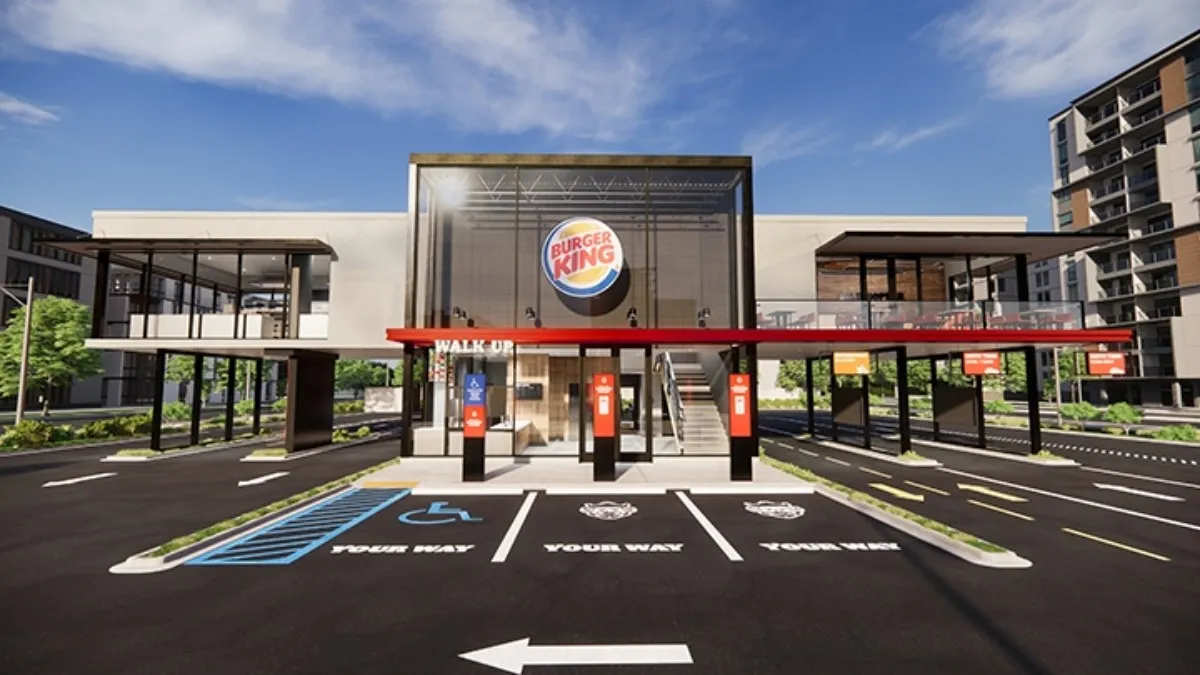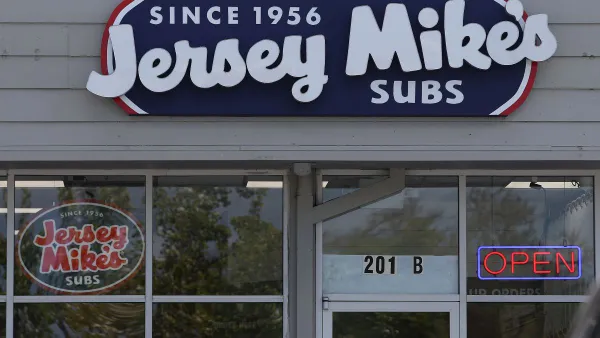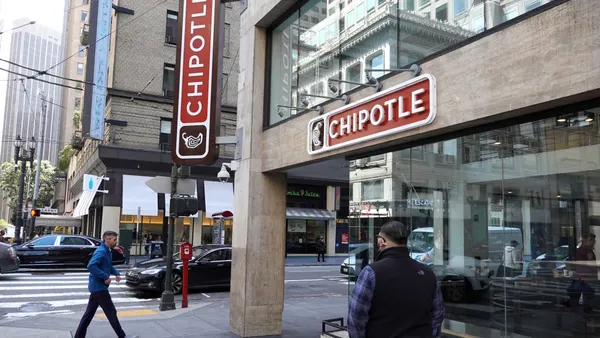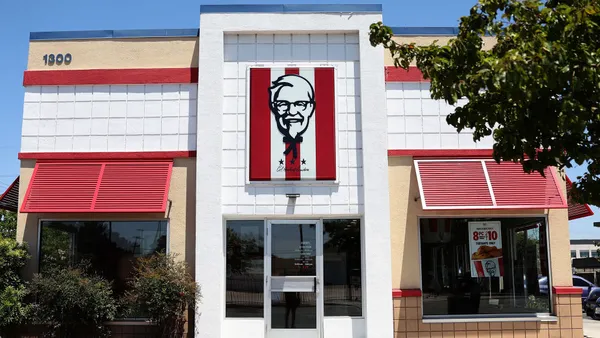Dive Brief:
- Burger King unveiled two new restaurant designs on Thursday that will have dedicated mobile order and curbside pickup areas, drive-in and walk-up order areas, enhanced drive-thrus, exterior dining space and sustainable design elements, according to a press release. The first newly designed restaurants, which the chain claims will be 100% touchless and 60% smaller than a traditional restaurant, will be built in 2021 in Miami, Latin America and Caribbean.
- The drive-in feature will allow guests to park their cars under solar-powered canopies, place their orders through the BK app by scanning a QR code at the parking spot and have food delivered to their cars. The curbside delivery element will allow customers to pre-order their food through the app and notify the restaurant team upon arrival at a pre-designated parking spot. The design features double or triple drive-thru lanes with digital menu boards and merchandising. One design option allows for a suspended kitchen that would use a conveyor belt system to deliver food to each lane with a third drive-thru lane dedicated to delivery orders. The single-story option provides a living wall by the drive-thru with a glass facade looking into the kitchen.
- Instead of a traditional indoor dining room, the new design features a shaded patio area with outdoor seating. Coded lockers will also be available on-premise for customers to grab mobile and delivery orders that arrive straight from the kitchen. An external walk-up window will also be available as an alternative ordering point for takeout.
Dive Insight:
The novel coronavirus pandemic has forced restaurants to rethink their building footprints and interior design to create a safer experience and minimize human-to-human interaction. Independent restaurants have been adding pickup windows and rethinking their interior dining rooms, while fast food chains have been adding additional off-premise channels, such as curbside. Taco Bell plans to open its first Go Mobile locations in Q1 2021, which will feature a traditional drive-thru lane, as well as a priority pickup lane for mobile orders.
Pre-COVID-19, Burger King was already considering upgrading the drive-thru experience with digital menus that offer location-based or situationally appropriate menu suggestions and personalized offers. It also had been updating hundreds of its locations with its "Burger King of Tomorrow" upgrade, which featured digital menu boards, double drive-thru lands and self-order kiosks. But the pandemic forced the company to change its focus.
Burger King's comparable sales have struggled during the pandemic, declining 13.4% during Q2 2020. A design emphasizing off-premise channels could help it recoup lost sales in the long term, especially if this design is adopted throughout the U.S.
"In March our in-house design and tech team accelerated new restaurant design plans and pushed the limits of what a Burger King restaurant could be,” Restaurant Brands International Chief Operating Officer Josh Kobza said in a press release. "We took into consideration how consumer behaviors are changing and our guests will want to interact with our restaurants. The result is a new design concept that is attractive to guests and will allow our franchisees to maximize their return."
Drive-thru sales rose industrywide 26% during April, May and June, according to The NPD Group, so creating more seamless drive-thru experiences will likely help process more orders. The drive-in model is also an interesting addition and could be piggy-backing on the success Sonic Drive-In has had during the pandemic. According to a Top Data report, the fast food chain was the favorite restaurant across the U.S. for the period from June 12, 2019 to June 12, 2020, based on data from Cuebiq.
"[Customers] probably still can't go or maybe don't want to go … [to a restaurant] where they're likely to sit down, but they can get out of the house and go to a place like Sonic and get kind of the same experience and the comfort and relative safety of their own cars," Sean Lansing, director of client strategy at Top Data, said.
The suspended kitchen design also appears to require less labor, especially with back-of-house workers delivering orders using a conveyor belt system instead of a staff member handing off orders to a customer. This could help reduce labor costs and assist in labor shortages that have continued even during a period of high unemployment.















